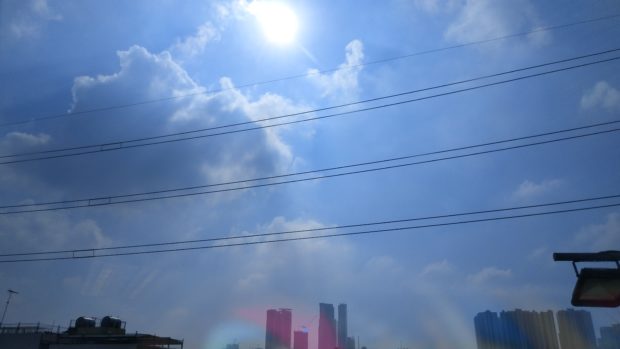Heat index at ‘danger’ levels seen to hit 18 areas on April 18

FILE PHOTO: Heat index at “danger” levels of 42 to 45 degrees Celsius are forecast to hit 18 areas of the country on Thursday, April 18, 2024, according to the Philippine Atmospheric, Geophysical and Astronomical Services Administration (Pagasa). Stock photo
MANILA, Philippines — Heat index at “danger” levels of 42 to 45 degrees Celsius were forecast to hit 18 areas of the country on Thursday, the Philippine Atmospheric, Geophysical and Astronomical Services Administration (Pagasa) said.
The state weather agency said in an advisory that these areas are:
- Aborlan, Palawan – 45 degrees Celsius
- Dagupan City, Pangasinan – 44 degrees Celsius
- Puerto Princesa City, Palawan – 44 degrees Celsius
- Catarman, Northern Samar – 44 degrees Celsius
- Tuguegarao City, Cagayan – 43 degrees Celsius
- Isabela State University in Echague, Isabela – 43 degrees Celsius
- Barangay Ambulong in Tanauan, Batangas – 43 degrees Celsius
- San Jose, Occidental Mindoro – 43 degrees Celsius
- Iloilo City, Iloilo – 43 degrees Celsius
- Dumangas City, Iloilo – 43 degrees Celsius
- Guiuan, Eastern Samar – 43 degrees Celsius
- Mariano Marcos State University in Batac, Ilocos Norte – 42 degrees Celsius
- Bacnotan, La Union – 42 degrees Celsius
- Aparri, Cagayan – 42 degrees Celsius
- Sangley Point, Cavite – 42 degrees Celsius
- Coron, Palawan – 42 degrees Celsius
- Virapc (Synop), Catanduanes – 42 degrees Celsius
- Roxas City, Capiz – 42 degrees Celsius
READ: Dangerous heat index hits 17 areas on April 17
According to Pagasa, heat indices ranging from 42 to 51 degrees Celsius fall under the “danger” category.
People in areas under this category may suffer from heat cramps, exhaustion, and even heat stroke with prolonged exposure, it added.
Article continues after this advertisementPagasa defines heat index as “a measure of the contribution that high humidity makes with abnormally high temperatures in reducing the body’s ability to cool itself.”
Article continues after this advertisementREAD: Pagasa: Fair weather with chances of isolated rains in most of PH
To prevent the effects of roasting weather, Pagasa said the public must limit time spent outdoors; drink plenty of water; avoid tea, coffee, soda, and liquor; use umbrellas, wear hats, and wear sleeved clothing outdoors; and schedule heavy-duty activities on the cooler periods of the day.
Pagasa likewise said that symptoms of heat-related illnesses include heavy sweating, exhaustion or fatigue, dizziness or lightheadedness, blacking out or feeling dizzy when standing, a weak but fast pulse, nausea, and vomiting.
In cases of emergency, Pagasa advised the public to do the following:
- Move the person to a shady spot and lie him or her down with legs elevated
- If conscious, have them sip cool water
- Remove clothing, apply cool water to the skin and provide ventilation
- Apply ice packs to the armpits, wrists, ankles, and groin
- Bring to a hospital immediately